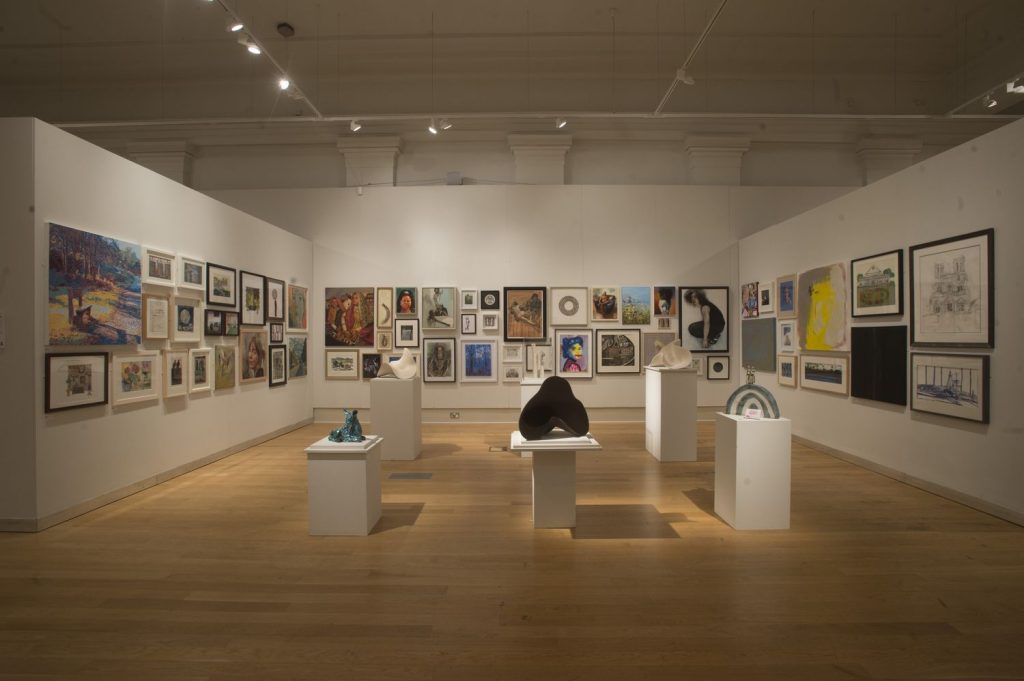As centers of creativity, art galleries provide visitors with an immersive experience into the world of artistic expression. These cultural havens present a wide range of works of art from different eras and locations, giving seasoned and up-and-coming artists a stage on which to present their ideas to a global audience. We go into the complex world of art galleries in this thorough investigation, looking at their importance, influence, and ongoing relevance in the context of modern culture.

What Art Galleries Are All About
As stewards of culture, art galleries conserve and exhibit works of art that encapsulate the spirit of human creation. Galleries curate a rich tapestry of artistic expression, ranging from paintings and sculptures to photography and mixed-media projects, and invite visitors to discover a world of visual delight and cerebral stimulation. These areas offer a haven from the daily grind, presenting opportunities for reflection, creativity, and exploration.
Curatorial Mastery: Crafting Insightful Exhibitions
Curatorial competence is at the core of every art gallery; knowledgeable curators are entrusted with creating exhibitions that captivate, inform, and provoke thinking. Curators construct coherent narratives that shed light on themes, movements, and cultural settings by carefully choosing and arranging artworks. Galleries aim to provide visitors with an enhanced understanding of art through carefully curated experiences, which may include retrospectives of well-known artists or the presentation of up-and-coming artists.
Interaction and Instruction: Promoting Cultural Literacy
Art galleries are active centers of participation and learning rather than just places to see things passively. Gallery activities, guided tours, and interactive exhibits are designed to encourage cultural literacy and stimulate discussion about art and its meaning. These programs, which range from adult lectures to kid-focused workshops, inspire viewers to use their imaginations, pose inquiries, and interact critically with the artworks on show.
Cultural Preservation: Preserving Tradition and History
Conserving artistic and cultural legacy for future generations is one of the main functions of art galleries. Galleries serve a vital role in honoring the accomplishments of artists throughout history and preserving artistic treasures of the past by collecting, preserving, and showcasing artwork. Galleries guarantee the preservation and accessibility of humanity’s cultural legacy by means of their exhibitions and collections.
Economic Impact: Promoting Innovation and Growth
Apart from their cultural importance, art galleries also directly contribute to the expansion and health of local economies. Revenue from art sales, commissions, and partnerships finances artists, galleries, and associated businesses, promoting innovation and economic expansion. Additionally, galleries draw tourists and visitors, increasing spending in the local economy and generating employment in the hospitality and tourism industries.
Explore More: Discover the Majestic Beauty of Castle and Fortress Wall Art Prints
Enhancing Oneself: Developing Creative Sensibilities
Art galleries provide people with chances to grow personally, develop their creative senses, and discover other cultures. Artworks that challenge, inspire, and prompt thinking can provide gallery visitors with moments of inspiration, reflection, and introspection, whether they are visiting alone or with friends and family. These interactions with art improve lives and promote a greater understanding of the human condition by igniting creativity, developing empathy, and widening views.

Promoting Diversity and Equity through Inclusivity and Accessibility
Although galleries have traditionally been thought of as exclusive places, accessibility and inclusivity are becoming more and more important in the field of modern art. Many galleries actively seek to dismantle barriers through outreach initiatives, free or discounted admission, and a focus on diversity in collections and exhibitions. Gallery attendance guarantees that art continues to be a common cultural legacy that is universally owned and appreciated.
The Digital Frontier: Adopting Innovation and Technology
In order to expand their audience and improve the visiting experience, art galleries are utilizing technology in the digital age. People may view art collections from anywhere in the globe because to the unparalleled accessibility provided by digital galleries, virtual exhibitions, and online platforms. Digital projects enhance physical galleries and create new opportunities for participation, interaction, and collaboration even while they will never fully replace the tactile experience of seeing art in person.
Conclusion
In summary, art galleries are dynamic cultural establishments that enhance our lives, pique our curiosity, and ignite our imaginations. They are more than just places to view artwork. Galleries serve a variety of purposes in society, from promoting creativity and education to safeguarding cultural heritage and stimulating the economy. Let’s honor art galleries’ lasting significance and transformative ability as defenders of culture, advocates of creativity, and upholders of the human spirit as we navigate a world that is constantly changing.








